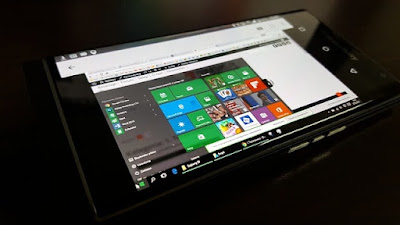 |
Graphical User Interface: What Is It?
A
type of interface called a graphical user interface (GUI) uses pictures
to represent data. To make it easier for the user to choose, graphical
representations such as menus, icons, tabs, pointers, and graphs are
displayed to them in a graphical user interface (GUI). Programming
languages of several kinds are used to construct graphical user
interfaces.
Where does one apply Graphical User Interface?
These
days, a lot of technological gadgets and smartphone apps use it. At the
moment, GUI is supported by a number of operating systems, including
Windows, iOS, MacOS, and Android. GUIs aren't perfect, even though they
make program navigation easier for users.
Like
other interface styles, a graphical user interface (GUI) has a number
of benefits and drawbacks. It is important to weigh the benefits and
drawbacks of this interface before determining whether to utilize it.
Let's examine the 5 Advantages and Disadvantages of GUI | Drawbacks & Benefits of GUI in this essay. You will learn about the pros and cons of employing a graphical user interface from this post.
Now let's get started,
Advantages of GUI
1. User Friendly
Even for a novice, GUI is a type of interface that is far simpler to use. Because data is represented by forms, symbols, and icons, users can categorize and traverse alternatives with ease. It just takes a click for users to access their functions.
In actuality, the GUI is the most popular interface on PCs and mobile devices because of how user-friendly it is.
2. Comprehension
Data
can be recognized more quickly when it is represented graphically
rather than textually by using symbols and other graphical elements. It
is particularly handy for non-programmers as it requires little
knowledge of computing commands.
They don't have to write and debug programs anymore. As a result, consumers may find GUI to have a far simpler learning curve.
3. Attractiveness
A
GUI interface is far more appealing in terms of appearance. The GUI is
designed with greater style and elegance than the command line
interface. Users would interact with their machine more if it were more
beautiful.
Additionally,
a graphical user interface (GUI) gives consumers a more flexible
approach to monitor the health status of their devices and other network
interfaces than a text format does.
4. Shortcut Keys
One
of the most noticeable aspects of the GUI is the use of shortcut keys.
When a task that requires multiple steps needs to be completed, shortcut
keys come in very handy. To expedite the process, just two keys need to
be combined. Consequently, a substantial amount of time was saved.
5. Multitasking
Moreover,
GUI facilitates the management of numerous duties. Users can operate
and watch two or more programs at once. For instance, you can use a web
browser to simultaneously browse the internet and watch a movie file on
Windows.
Disadvantages of GUI
1. Implementation
Although
it may seem simple to use, implementing a graphical user interface is
not an easy task. It is the responsibility of the programmer to properly
create functionalities so that consumers can interact with this
interface more easily.
A
single error on the part of the coder can render all of their hard work
useless. It could take a lot of time and work to do all of this.
2. Cost
The design of the graphical user interface increases the difficulty and cost of development. It is impossible for regular individuals to produce. Such an interface will only be possible to develop by highly trained programmers.
Additionally, a GUI requires additional hardware to be attached, which could raise the total cost.
3. Speed
A
graphical user interface has numerous moving components. So, a GUI is
far slower than a command line interface. The CLI allows us to complete
jobs faster than the GUI. Therefore, CLI remains the best choice for
completing some jobs.
4. Time Consumption
Although
graphical user interfaces are simple to use, the process of building
them is not the same. Numerous textual interpretations in GUIs require a
significant amount of time and effort to produce.
It
will take a lot of time for the programmer to create, tie, and then
assign the image with the appropriate functions. This becomes
increasingly more challenging if there are a lot of images, each with a
distinct purpose.
5. Memory
Usage
Generally speaking, a graphical user interface consumes more computer memory and power than other interface types since it makes use of all graphical representations. The resources of a graphical user interface are not optimized. It will therefore use a substantial amount of computer resources.
Unless it's a very strong machine, this won't be an issue. The adoption of power-limited systems will have a significant impact on its performance.



.jpg)







0 Comments